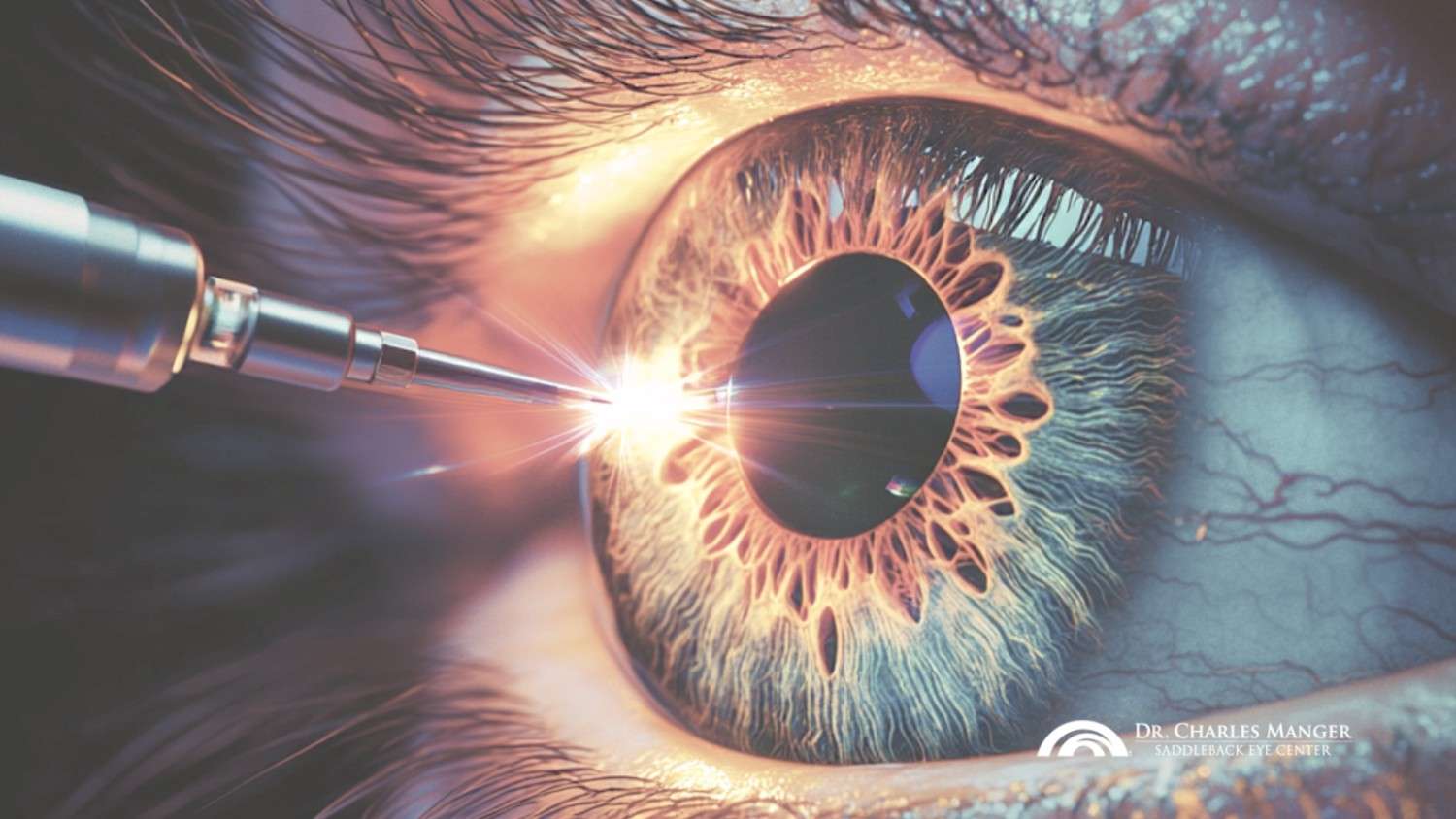Laser-assisted Situ Keratomileusis (LASIK) and Small Incision Lenticule Extraction (SMILE) are the two most popular approaches for laser eye surgery, so much so that millions of people have sought out and undergone the procedure since being approved by the FDA.
Both procedures achieve the same benefit. They reduce or eliminate the need for glasses and contact lenses through long-term correction of vision problems, giving you greater freedom in daily life. However, choosing one isn’t akin to selecting a zero-sugar variety of your favorite ice cream pint.
While the benefits they achieve are similar, LASIK and SMILE have critical differences in various aspects, so you will obviously have much to consider when choosing your treatment course. Depending on your specific needs, one might end up being more advantageous for you.
In this guide, we’ll explain the differences between SMILE and LASIK so that you can make the best choice for your eye health.
Key Differences Between SMILE and LASIK Procedures
Although they are both laser-based surgeries, the first key difference between SMILE and LASIK is in how the procedure is done. LASIK involves creating a corneal flap, whereas SMILE gears more toward removing a small piece of lenticule from the cornea.
Let’s discuss these in detail below.
1. Procedure, Technology Used in, and Recovery From SMILE vs LASIK
Despite how small the difference sounds, they require different technologies and will similarly impact the recovery process. The table below provides a summary comparing the differences in each; we discuss the details you need to know further down.
| Procedure | Technology | Recovery | Vision Outcomes | |
| LASIK | Creates a flap to reshape the cornea. | Femtosecond laser, excimer laser, and Wavefront | Vision improvements within 24 to 48 hours | 20/20 or better vision |
| SMILE | Removes a small piece of lenticule to reshape the cornea. | Femtosecond laser only | Vision improvements may take several days to weeks. | 20/20 or better vision |
LASIK: How it’s done, recovery, and vision outcomes
In LASIK surgery, your eye surgeon will use a femtosecond laser to create a thin, hinged flap on the surface of your cornea. The flap is then lifted, and an excimer laser reshapes the underlying corneal tissue to correct vision.
Once reshaped, the flap is placed back as a natural bandage. LASIK can also be customized using advanced Wavefront technology, ensuring sharper vision tailored to the patient’s eye structure.
Recovery from LASIK is quicker than that from most laser eye surgeries. Most patients experience improved vision within 24 to 48 hours, and they may also achieve 20/20 or better vision.
READ ALSO: LASIK Eye Surgery Timeline: Understanding Your Journey to Better Vision
SMILE: How it’s done, recovery, and vision outcomes
This procedure uses a femtosecond laser to create a lenticule—a thin, disc-shaped piece of corneal tissue—through a small incision. The surgeon removes the lenticule to reshape the cornea and correct vision. SMILE is often considered less invasive because it doesn’t require a corneal flap, but it lacks the precision of LASIK’s Wavefront customization, limiting its effectiveness for more complex prescriptions.
Recovery with SMILE can take longer, with some patients reporting blurred vision and glare for several days to weeks. While the smaller incision can reduce dry eye symptoms in some cases, visual clarity stabilizes more slowly compared to LASIK.
Patients often find LASIK offers quicker results and more predictable outcomes. However, individual healing patterns can vary, so making follow-up appointments is essential for monitoring progress.
2. Suitability and Conditions Treated by SMILE vs LASIK
Another area where SMILE and LASIK differ is in the range of conditions each can address. LASIK corrects a broader scope of vision problems, while SMILE is more limited. SMILE’s limited capabilities make it unsuitable for certain people: not all LASIK candidates are SMILE candidates. The table below summarizes these differences.
| SMILE | LASIK | |
| Nearsightedness | Yes | Yes |
| Astigmatism | Only mild cases | Yes |
| Farsightedness | No | Yes |
| Presbyopia (age-related vision loss) | No | Yes |
3. Potential Risks and Long-Term Safety Considerations
Safety and reliability are crucial factors when deciding between LASIK and SMILE. Both surgeries have excellent safety records, but LASIK’s longer history offers more extensive data on long-term outcomes. Here’s how they differ in this aspect.
SMILE: Risks and long-term safety considerations
- Long-term data on SMILE is still limited. Having only been approved by the FDA in 2016, there are fewer studies that establish the safety of SMILE. Moreover, while it offers good outcomes for nearsightedness, studies show that fewer patients achieve 20/20 vision compared to LASIK.
- Enhancements after SMILE are more complex. If the results are not satisfactory, patients may need additional procedures like PRK to achieve the desired vision correction. This can make SMILE less predictable than LASIK.
LASIK: Risks and long-term safety considerations
- LASIK has over 30 years of proven success. It is also considered one of the safest surgeries available. In addition, Manger and his practice at Saddleback Eye Center boast a 99.7% success rate, with patients achieving 20/20 or better vision.
- Complications with LASIK are rare. Apart from the usual and temporary dry eyes and glare post-surgery, there are no severe complications from LASIK. If side effects like dry eyes and glare linger more than expected, your doctor will work with you to work on further enhancements.
Recovery, Lifestyle Impact, and Patient Experience
The recovery experience should not be overlooked in laser eye surgery. Many people look for a procedure that has little to no downtime, hoping to resume activities almost immediately. Let’s discuss the difference between SMILE and LASIK in this aspect.
SMILE: Recovery timeline and impact on daily activities
- Requires prolonged caution when doing certain activities. Sports or outdoor activities must be done with caution for extended periods as vision stabilization for SMILE can take a while. Swimming and contact sports, for instance, must be avoided for four to six weeks to prevent complications.
- Recovery time is longer. SMILE patients often need several days to weeks for vision to stabilize. That’s because while the incision is small, tissue removal often takes more time to heal.
LASIK: Recovery timeline and impact on daily activities
- LASIK lets you resume light activities in a few days. Light and low-impact activities like walking are possible a few days post-LASIK surgery. Meanwhile, more strenuous sports like swimming or contact sports can be resumed in two to four weeks, letting you get back to your fitness routines.
- Daily activities are also allowed for at least one to two days. Most LASIK patients are able to drive and resume daily activities like normal within 24 to 48 hours. This is because minor, temporary side effects like dry eyes and light sensitivity start improving within the first week.
Final Thoughts: Which Procedure is Right for You?
Choosing between LASIK and SMILE ultimately depends on your individual needs, vision goals, and lifestyle. LASIK offers quicker recovery, better visual outcomes, and a broader range of treatment options, making it the most versatile choice for many patients. Conversely, SMILE may appeal to those seeking a minimally invasive option for mild prescriptions.
Consulting with an experienced surgeon like Dr. Manger at Saddleback Eye Center is essential to determining which procedure best suits your eye health and vision needs. With over 94,000 procedures performed, Dr. Manger can guide you through decision-making and help you achieve your best possible vision.
Ready to explore your options? Schedule a free 3D LASIK exam at Saddleback Eye Center today and take the first step toward clear, hassle-free vision.





